Quando si tratta di sciare nella POWDER profonda, la maggior parte delle persone pensa che sci più larghi siano la soluzione. Ma ecco il punto: la larghezza è solo una parte dell'equazione. Fattori come il profilo rocker, la lunghezza e i materiali giocano un ruolo enorme in quanto bene i tuoi sci galleggiano e performano.
Punti chiave:
- Profilo rocker: Gli sci con risalita anticipata o camber inverso mantengono le punte sopra la neve, prevenendo il "tip dive".
- Lunghezza vs. galleggiamento: Sci più corti (come gli skiblades da 99 cm di Snowfeet) possono offrire un ottimo galleggiamento e un migliore controllo in spazi stretti.
- Il peso conta: Sci leggeri riducono l'affaticamento e facilitano la scivolata sulla POWDER.
- Compatibilità con gli scarponi: Gli skiblades Snowfeet funzionano con scarponi da snowboard o anche con scarpe invernali, evitando la necessità di scarponi da sci specializzati.
Perché gli Skiblades 99 POWDER di Snowfeet si distinguono: Con soli 39 pollici di lunghezza, questi skiblades sono potenti. Galleggiano bene, girano rapidamente e non richiedono attrezzature ingombranti. Inoltre, sono portatili - basta metterli nello zaino. A 490$, sono un'opzione economica rispetto alle attrezzature tradizionali, che possono costare oltre 800$.
Se vuoi un modo divertente e senza problemi per goderti le giornate di POWDER senza trascinarti dietro attrezzature ingombranti, gli skiblades Snowfeet potrebbero essere esattamente ciò che stai cercando.
Il Segreto in 3 Passi dello Sciatore Pro per Sciar senza Sforzo nella Powder
Capire il Galleggiamento nella Powder: Oltre la Larghezza
Quando si scelgono sci da powder, molte persone si concentrano sulla larghezza in vita - numeri come 110 mm a 130 mm spesso sono al centro dell'attenzione, con l'assunzione che più largo significhi automaticamente un galleggiamento migliore. Ma ecco il punto: la larghezza da sola non garantisce una navigazione fluida nella neve profonda e soffice. Uno sci largo può fornire superficie, ma senza il design giusto può risultare goffo e inefficiente in condizioni morbide.
Il Ruolo della Superficie e del Design
Il galleggiamento non riguarda solo la larghezza - è la superficie totale dello sci, che combina lunghezza e larghezza. Per esempio, uno skiblade Snowfeet* da 99 cm ben progettato può offrire un galleggiamento impressionante grazie alla sua ingegneria attenta. Una caratteristica chiave è il profilo rocker, chiamato anche early rise o camber inverso. Questo design solleva punte e code dal suolo prima rispetto agli sci tradizionali camber. Originariamente sviluppato per gli sci da powder, il profilo rocker aiuta gli sci a scivolare sulla neve soffice come uno sci d'acqua. Mantenendo le punte sopra la neve, previene il temuto "affondamento della punta" che può rovinare la tua giornata in powder.
Mentre molti sci tradizionali si affidano alla sola larghezza per il galleggiamento, Snowfeet* adotta un approccio diverso. Il loro design a camber inverso completo mantiene il centro dello sci a contatto con la neve mentre punte e code si sollevano verso l'alto. Questa configurazione offre un eccellente galleggiamento in condizioni di powder profondo. Inoltre, materiali leggeri riducono la pressione verso il basso, rendendo più facile scivolare sulla neve soffice con meno sforzo.
Questo design intelligente sfida l'idea che sci più larghi siano sempre migliori, come esploreremo più avanti.
Sfondare il Mito del "Più Largo è Meglio"
È allettante pensare che sci più larghi significhino automaticamente un galleggiamento migliore, ma concentrarsi solo sulla larghezza perde il quadro più ampio. Nella neve profonda, gli sci che si basano molto sulla larghezza possono risultare lenti nelle curve e nelle manovre. Per esempio, in 60 cm di powder fresco su una pendenza ripida, gli sci tradizionali larghi spesso richiedono molta forza alle gambe per iniziare le curve. D'altra parte, gli skiblades Snowfeet* 99 POWDER offrono una risposta rapida e senza sforzo.
Il profilo rocker gioca un ruolo importante qui, migliorando sia il galleggiamento che l'agilità. Questo design ti dà una sensazione "surfy", permettendoti di scivolare e curvare con facilità. È una svolta, specialmente per gli sciatori che affrontano terreni variabili o per chi è nuovo allo sci in powder. I design Snowfeet* trovano un equilibrio tra galleggiamento e manovrabilità, dimostrando che non servono sci ingombranti e larghi per godersi una discesa fluida nella neve profonda.
Elementi Chiave di Design per il Massimo Galleggiamento nella POWDER
Quando sei alla ricerca dello sci da powder definitivo, alcune caratteristiche di design possono fare tutta la differenza in come i tuoi sci galleggiano. Questi elementi vanno oltre la semplice larghezza, concentrandosi su dettagli di performance che elevano la tua esperienza nella neve profonda.
Lunghezza: trovare il perfetto equilibrio
Gli sci più lunghi sono tradizionalmente la scelta per una migliore galleggiabilità perché offrono più superficie. Ma nella POWDER profonda, quella lunghezza extra a volte può giocarti contro, specialmente quando si zigzaga tra alberi stretti o punti tecnici. Lo skiblade 99 POWDER adotta un approccio intelligente qui. Massimizzando la superficie mantenendo gli sci più corti, ottieni il meglio di entrambi i mondi: eccellente galleggiabilità e la capacità di ruotare rapidamente. Questa lunghezza più corta significa che puoi mantenere il controllo, la velocità e reagire all'istante - tutto senza rinunciare a quella galleggiabilità amica della POWDER.
Profilo Rocker: il segreto per restare a galla
La lunghezza è importante, ma il profilo dello sci è altrettanto cruciale. Pensalo come uno sci d'acqua - progettato per scivolare su superfici morbide piuttosto che tagliarle.
Snowfeet* realizza questo concetto con un profilo rocker progettato con cura. Mentre gli sci tradizionali con camber tendono a sprofondare con il naso nella POWDER, una configurazione rocker mantiene le punte sollevate, facilitando l'inizio delle curve e la navigazione su terreni difficili.
Ciò che rende Snowfeet* unico è l'uso di un design a camber inverso completo. A differenza di molti sci da POWDER che combinano rocker e camber, Snowfeet* punta tutto su un profilo completamente curvato verso l'alto. Questo design non solo aumenta la galleggiabilità ma conferisce agli sci una sensazione giocosa, quasi "surfer", perfetta per avventure nella neve profonda.
Materiali leggeri per una guida senza sforzo
Un altro elemento rivoluzionario è l'uso di materiali leggeri. Gli sci tradizionali spesso si affidano a materiali più pesanti per affrontare le piste battute, ma quel peso può essere un problema nella POWDER. Snowfeet* adotta un approccio diverso, usando una costruzione più leggera per ridurre la pressione sulla neve. Questo significa che resti in superficie con meno sforzo e aiuta a ridurre l'affaticamento - ottima notizia se passi tutta la giornata a inseguire tracce fresche. Abbinato al profilo rocker ottimizzato, il peso ridotto garantisce una galleggiabilità senza sentirsi appesantiti.
Semplicità di scarponi e attacchi
Snowfeet* brilla anche per la compatibilità con scarponi e attacchi. A differenza delle configurazioni tradizionali che richiedono scarponi da sci specializzati e attacchi complessi, gli skiblades Snowfeet* funzionano con calzature invernali normali o scarponi da snowboard. Questo li rende super versatili e facili da usare. Per esempio, gli scarponi da snowboard offrono una flessibilità naturale, che migliora sia il comfort che l'equilibrio nella neve profonda. Che tu stia curvando sulle piste battute, esplorando il backcountry intatto o anche andando al park, Snowfeet* offre un'esperienza fluida e senza problemi che le configurazioni tradizionali non possono eguagliare.
Snowfeet* Skiblades vs. Sci e Snowboard standard
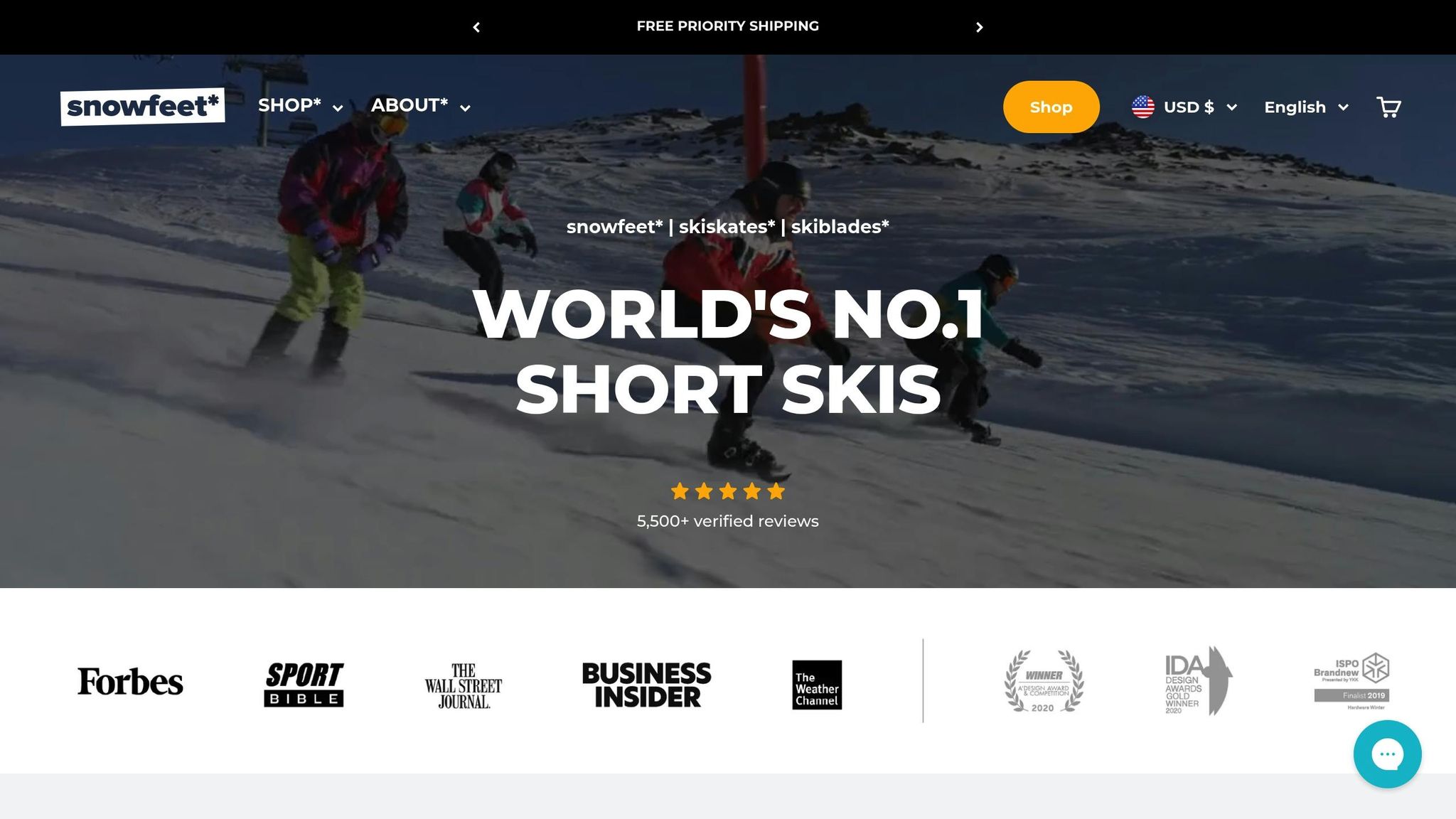
Gli skiblades Snowfeet* non sono solo una versione più piccola degli sci tradizionali o degli snowboard - cambiano completamente il modo in cui vivi le giornate di POWDER. Vediamolo nel dettaglio.
Tabella di confronto: caratteristiche chiave e vantaggi
| Caratteristica | Snowfeet* 99 POWDER | Sci tradizionali per POWDER | Snowboards |
|---|---|---|---|
| Lunghezza | 99 cm (39 pollici) | 170–190 cm (67–75 pollici) | 150–165 cm (59–65 pollici) |
| Peso | Ultra-leggero | Costruzione pesante | Da medio a pesante |
| Curva di apprendimento | Veloce e intuitivo | Ripido, richiede lezioni | Difficoltà moderata |
| Manovrabilità | Risposta istantanea, curve strette | Più lento, curve ampie necessarie | Buono ma dipende dal bordo |
| Compatibilità scarponi | Scarpe invernali, scarponi da snowboard | Solo scarponi da sci specializzati | Solo scarponi da snowboard |
| Portabilità | Si adattano a uno zaino | Richiede portapacchi/borsa da tetto | Trasporto ingombrante |
| Versatilità del terreno | Tutte le condizioni, adatti al park | Specifici per POWDER | Buoni per tutto il comprensorio |
| Fascia di prezzo | A partire da $490 | $800–$1,200+ | $400–$800+ |
| Tempo di montaggio | Meno di 2 minuti | Oltre 10 minuti con attacchi | 5–10 minuti |
Questa tabella evidenzia come gli skiblades Snowfeet* eccellano in aree come portabilità, facilità d'uso e convenienza, rendendoli un'opzione eccezionale per gli appassionati di POWDER.
Perché Snowfeet* si distingue
Snowfeet* 99 POWDER skiblades sono tutto semplicità e versatilità. Con soli 99 cm, il loro design compatto offre un galleggiamento eccellente nella neve profonda garantendo un'agilità senza pari. A differenza degli sci lunghi e pesanti per POWDER di marchi come Rossignol o K2, che possono essere difficili in spazi stretti o su piste battute, gli skiblades Snowfeet* rendono le curve rapide un gioco da ragazzi. Pensali come i pattini da ghiaccio del mondo POWDER - veloci, reattivi e incredibilmente intuitivi.
Un altro grande vantaggio? La compatibilità con gli scarponi. Con Snowfeet*, puoi usare i tuoi normali scarponi da inverno o da snowboard, evitando il fastidio e la spesa degli scarponi da sci specializzati. Le configurazioni sci tradizionali spesso implicano scarponi rigidi e costosi che possono risultare scomodi per lunghe giornate in montagna. Snowfeet* mantiene le cose semplici e comode, così puoi concentrarti a goderti la discesa.
La portabilità è un altro fattore decisivo. Dimentica i portapacchi o le borse sovradimensionate - gli skiblades Snowfeet* entrano in uno zaino. Questa comodità, unita al loro rapido tempo di montaggio (meno di due minuti!), significa che passerai più tempo sulle piste e meno a armeggiare con l'attrezzatura.
E parliamo di costi. Un set di sci da powder di alta qualità di marchi come Atomic o Salomon può facilmente costare dai 800 ai 1.200 dollari - e questo senza contare scarponi, attacchi o bastoncini. Snowfeet* offre un'esperienza powder comparabile a soli 490 dollari, senza bisogno di attrezzatura extra. Un vero vantaggio per il tuo portafoglio.
Snowfeet* dimostra che non servono sci sovradimensionati o snowboard ingombranti per dominare nel powder. Il loro design innovativo rende le giornate di powder più accessibili, più divertenti e molto meno complicate.
sbb-itb-17ade95
Consigli pratici per scegliere gli sci da powder
Scegliere gli sci da powder perfetti non significa solo prendere la coppia più larga sullo scaffale. Si tratta di trovare sci che corrispondano al tuo terreno, livello di abilità e a come prevedi di usarli. Ecco come fare una scelta che funziona per te.
Pensa al tuo terreno e ai tuoi obiettivi sciistici
Il tipo di terreno su cui scii dovrebbe guidare la tua scelta. Per esempio, se stai zigzagando tra alberi stretti in posti come Whistler o Steamboat Springs, avrai bisogno di qualcosa di agile che possa gestire curve rapide. Gli sci da powder tradizionali, spesso più lunghi, potrebbero risultare ingombranti in questi scenari. D'altra parte, gli skiblades Snowfeet* 99 POWDER offrono un galleggiamento eccellente in un design compatto da 39 pollici, rendendoli ideali per navigare spazi stretti. Sono anche abbastanza versatili da gestire transizioni da powder soffice a neve più dura e battuta, dandoti più controllo sulla tua performance.
Se sei il tipo che ama esplorare il POWDER incontaminato fuori pista, la portabilità diventa un fattore decisivo. Gli skiblades Snowfeet* sono abbastanza compatti da entrare in uno zaino standard, rendendoli una scelta pratica per quelle avventure fuori dai sentieri battuti. Che tu rimanga alla stazione sciistica o ti avventuri nella natura selvaggia, gli sci giusti possono fare una grande differenza.
Abbina il design al tuo livello di abilità
Il tuo livello di esperienza gioca un ruolo importante nel tipo di sci più adatto a te. Gli sci tradizionali spesso richiedono tecniche più avanzate, che possono intimidire gli sciatori meno esperti. Gli skiblades Snowfeet* 99 POWDER, con il loro design più corto, sono più facili da manovrare e offrono una risposta rapida, aiutando a costruire fiducia anche nelle condizioni di POWDER più impegnative.
Per gli sciatori intermedi, la versatilità è fondamentale. Invece di essere limitati alla POWDER profonda, gli skiblades Snowfeet* sono progettati per affrontare una varietà di condizioni - dalla neve fresca alle piste battute e persino ai parchi di terreno. Questa adattabilità significa che puoi affrontare qualsiasi cosa la giornata ti riservi senza dover cambiare attrezzatura.
Anche gli sciatori avanzati possono beneficiare della precisione e del controllo offerti da un design compatto. Mentre gli sci più lunghi sono spesso associati alla stabilità, Snowfeet* dimostra che sci più corti e maneggevoli possono eccellere su terreni tecnici. Inoltre, il loro design leggero e portatile è un vantaggio per chi apprezza la comodità.
Portabilità e comodità contano
Gli sci tradizionali possono essere ingombranti e richiedere sforzi extra per il trasporto. Gli skiblades Snowfeet*, invece, sono compatti, facili da trasportare e compatibili con scarponi da sci standard. Puoi metterli nello zaino o tenerli in macchina, così sei sempre pronto a scendere sulle piste. Niente più preoccupazioni per il fastidio o il costo delle attrezzature tradizionali.
E qui sta il bello: con un prezzo di 490$, gli skiblades Snowfeet* 99 POWDER offrono un'opzione economica senza compromettere le prestazioni. Passerai meno tempo a preoccuparti dell'attrezzatura e più tempo a tracciare curve in quella POWDER profonda da sogno.
Prodotto in evidenza: Snowfeet* 99 POWDER Skiblades
Gli skiblades Snowfeet* 99 POWDER sono qui per rivoluzionare le tue avventure in montagna. Progettati specificamente per la POWDER profonda, offrono galleggiamento e controllo senza l'ingombro degli sci tradizionali.
Panoramica del prodotto e caratteristiche
Questi skiblades puntano tutto sulla combinazione di prestazioni e comodità. Con soli 39 pollici (99 cm) di lunghezza, sono molto più corti degli sci da powder tradizionali, che spesso superano i 70 pollici. Questa dimensione compatta li rende molto più facili da gestire, specialmente su terreni stretti o difficili, pur offrendo le prestazioni che ti aspetteresti da sci più lunghi.
La costruzione leggera è una svolta, riducendo l'affaticamento durante lunghe giornate sulla neve. E la parte migliore? Sono compatibili con quasi tutti i tipi di calzature - scarponi da sci, scarponi da snowboard o anche scarpe invernali - quindi niente bisogno di attrezzature extra.
La durabilità è un altro punto di forza. Che tu stia scivolando sulla POWDER fresca o affrontando neve più pesante e compatta, questi skiblades resistono. Trovano un equilibrio tra flessibilità e stabilità, dandoti fiducia sia che tu stia disegnando curve in spazi aperti o zigzagando tra gli alberi.
Perché gli Snowfeet* 99 POWDER si distinguono nel powder
Ecco cosa li rende eccezionali per lo sci su powder. Il profilo rocker e il design più corto rendono le curve nella neve profonda senza sforzo. Godrai di un controllo preciso e manovre rapide e agili, che tu stia schivando alberi o adattandoti a condizioni di neve variabili.
Il loro design leggero è un bonus anche. Meno peso significa meno energia spesa, così puoi restare più a lungo in montagna senza sentirti esausto. E a differenza degli sci tradizionali per powder, che spesso risultano goffi sulle piste battute, questi skiblades si adattano perfettamente alla neve compatta e persino alle lastre di ghiaccio. Parliamo di versatilità.
Confronto tra prezzo e valore
Prezzo a $490, gli Snowfeet* 99 POWDER skiblades sono un affare rispetto agli assetti tradizionali per sci da powder. Questi possono facilmente costare da $800 a $1.200 - o più - considerando attacchi specializzati, montaggio e attrezzatura per il trasporto. Inoltre, il design compatto da 39 pollici entra in uno zaino standard, rendendoli perfetti per missioni spontanee sulla neve fresca.
Se sei stato titubante a tuffarti nello sci su powder a causa del costo o dell'impegno per attrezzature specializzate, questi skiblades sono il tuo biglietto. Offrono prestazioni impressionanti sulla neve fresca, adattabilità a varie condizioni e la libertà di esplorare - tutto a un prezzo amichevole per gli sciatori ricreativi.
Conclusione: Trasforma la tua esperienza di sci su powder
Trovare gli sci perfetti per il powder significa ottenere il giusto mix di superficie, profilo rocker e costruzione leggera. Quando questi elementi si combinano, possono cambiare completamente il modo in cui vivi la neve profonda.
Gli sci tradizionali per powder tendono a essere lunghi, pesanti e richiedono attacchi specializzati, che possono aumentare sia il costo che il fastidio. Ma Snowfeet* ribalta la situazione con i loro 99 POWDER skiblades. Questi skiblades da 39 pollici offrono un galleggiamento incredibile, agilità e una guida giocosa - tutto in una dimensione compatta che può entrare nel tuo zaino.
Il design è tutto incentrato sul rendere lo sci su powder più facile e divertente. Un profilo rocker pronunciato aiuta a mantenere le punte sopra la neve, mentre la piattaforma larga fornisce la superficie necessaria per curve fluide e senza sforzo. A differenza degli sci lunghi che possono risultare goffi sulle piste battute, questi skiblades gestiscono tutto, dal powder fresco alle condizioni miste, senza perdere un colpo.
Le loro transizioni rapide da un bordo all'altro e la sensazione giocosa li rendono perfetti per districarsi tra i boschi stretti, affrontare terreni variabili o semplicemente godersi la libertà di una giornata di powder. E sono progettati per ridurre l'affaticamento delle gambe, così puoi continuare più a lungo senza sentirti esausto.
A $490, gli Snowfeet* 99 POWDER skiblades offrono un'alternativa solida agli assetti tradizionali. Portano il divertimento, la flessibilità e il controllo necessari per affrontare le giornate di powder con fiducia. Che tu sia nuovo allo sci su powder o semplicemente in cerca di un modo fresco per goderti quelle perfette giornate di cielo azzurro, questi skiblades potrebbero essere il cambiamento che stavi aspettando.
Domande Frequenti
Come migliora il profilo rocker degli skiblades Snowfeet le prestazioni nella POWDER profonda rispetto agli sci tradizionali?
Gli skiblades POWDER 99 cm di Snowfeet presentano un profilo rocker con una curva verso l'alto sulle punte e le code. Questo design aiuta gli skiblades a scivolare dolcemente sulla POWDER profonda, evitando che affondino e facilitando il controllo. Il risultato? Curve più fluide e meno fatica, anche nella neve intatta.
Gli sci tradizionali, pur essendo più lunghi e stabili, spesso hanno una forma camber e profili rocker meno pronunciati. Questo li rende più soggetti ad affondare nella POWDER. La lunghezza più corta degli Snowfeet, unita al loro profilo rocker migliorato, offre un eccellente galleggiamento, agilità e controllo nella neve profonda. Sono una scelta fantastica per gli amanti della POWDER che vogliono qualcosa di versatile e facile da gestire.
Gli skiblades Snowfeet sono adatti per piste battute e neve mista, o sono pensati solo per la POWDER?
Gli skiblades Snowfeet sono un concentrato di versatilità. Che tu stia intagliando nella POWDER, sfrecciando su piste battute o affrontando neve mista, questi compatti skiblades gestiscono tutto. Le loro dimensioni ridotte e la risposta rapida li rendono perfetti per avventure all-mountain, permettendoti di passare facilmente da piste battute, park e condizioni di neve variabili senza sudare.
Ciò che li distingue dagli sci o snowboard tradizionali è la loro adattabilità. Mentre la maggior parte dell'attrezzatura è progettata per terreni specifici, gli skiblades Snowfeet combinano agilità e controllo per darti la libertà di esplorare diversi ambienti. Sono una scelta solida per chi vuole mantenere le opzioni aperte sulle piste.
Perché usare scarpe invernali normali o scarponi da snowboard con gli skiblades Snowfeet invece degli scarponi da sci?
Usare le tue scarpe invernali normali o gli scarponi da snowboard con gli skiblades Snowfeet offre grandi vantaggi rispetto agli scarponi da sci tradizionali. Prima di tutto, sono molto più comodi. Le scarpe invernali e gli scarponi da snowboard sono più morbidi, flessibili e molto più facili da indossare e camminarci. Questo significa meno stress per i piedi, anche dopo una giornata intera sulle piste. Se preferisci un'esperienza più rilassata o semplicemente odi la rigidità degli scarponi da sci, questo cambia completamente il gioco.
Un altro grande vantaggio? Sono super comodi e versatili. Puoi evitare la seccatura di investire in pesanti e rigidi scarponi da sci e usare semplicemente le calzature che hai già. Questo non solo alleggerisce il carico dell'attrezzatura, ma rende anche gli skiblades Snowfeet una scelta eccellente per principianti o chiunque voglia avvicinarsi agli sport invernali. Unendo un design intelligente alla facilità d'uso, gli skiblades Snowfeet ti offrono un modo fresco e moderno di goderti la neve senza complicazioni.

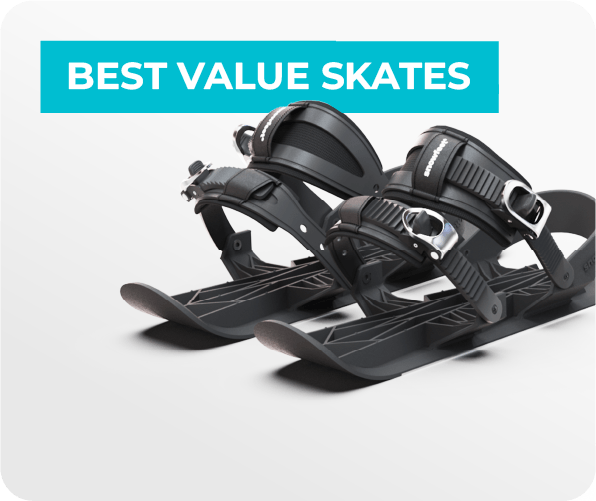



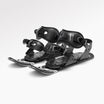
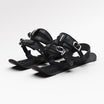
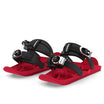
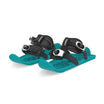

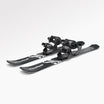

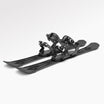
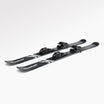






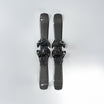
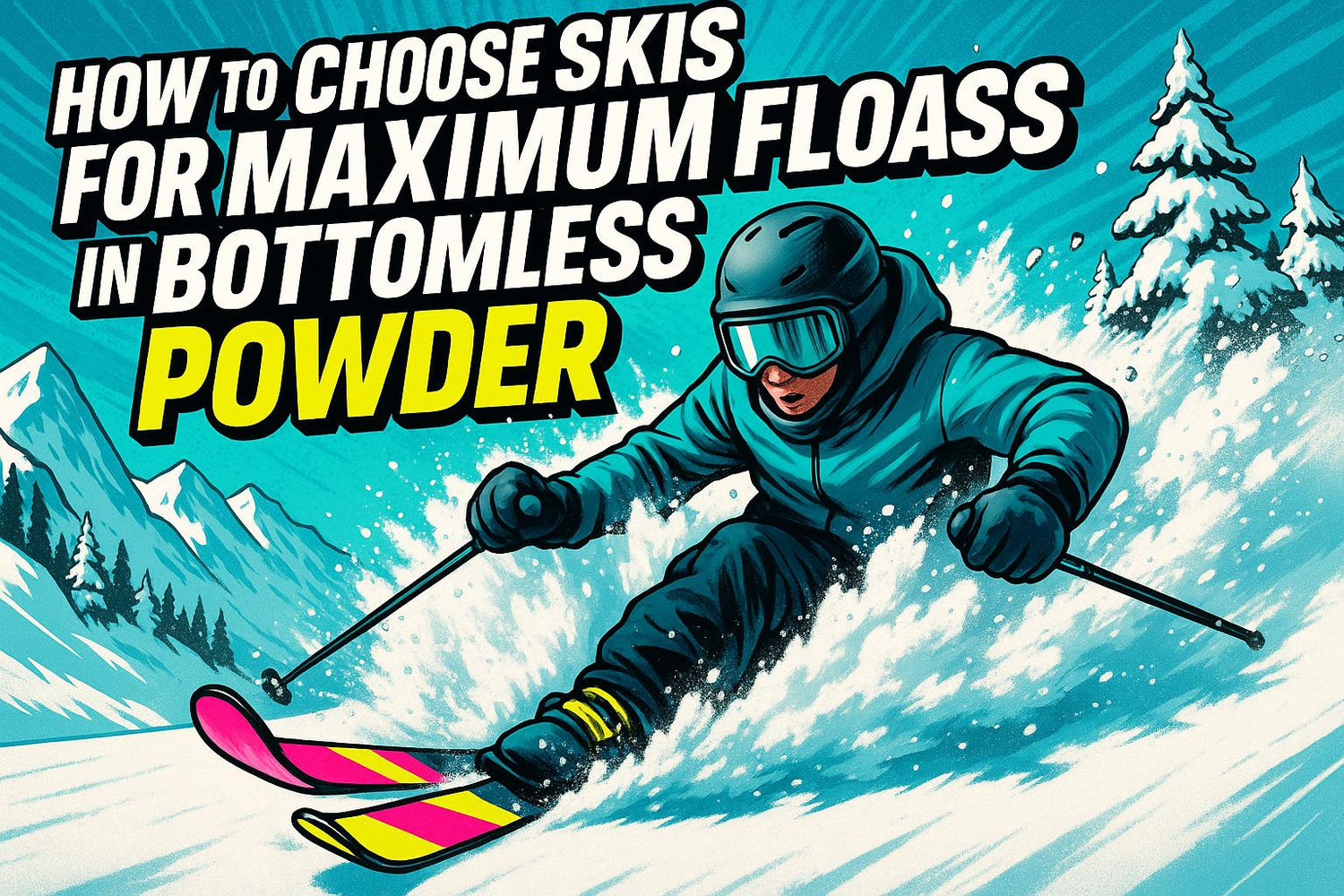
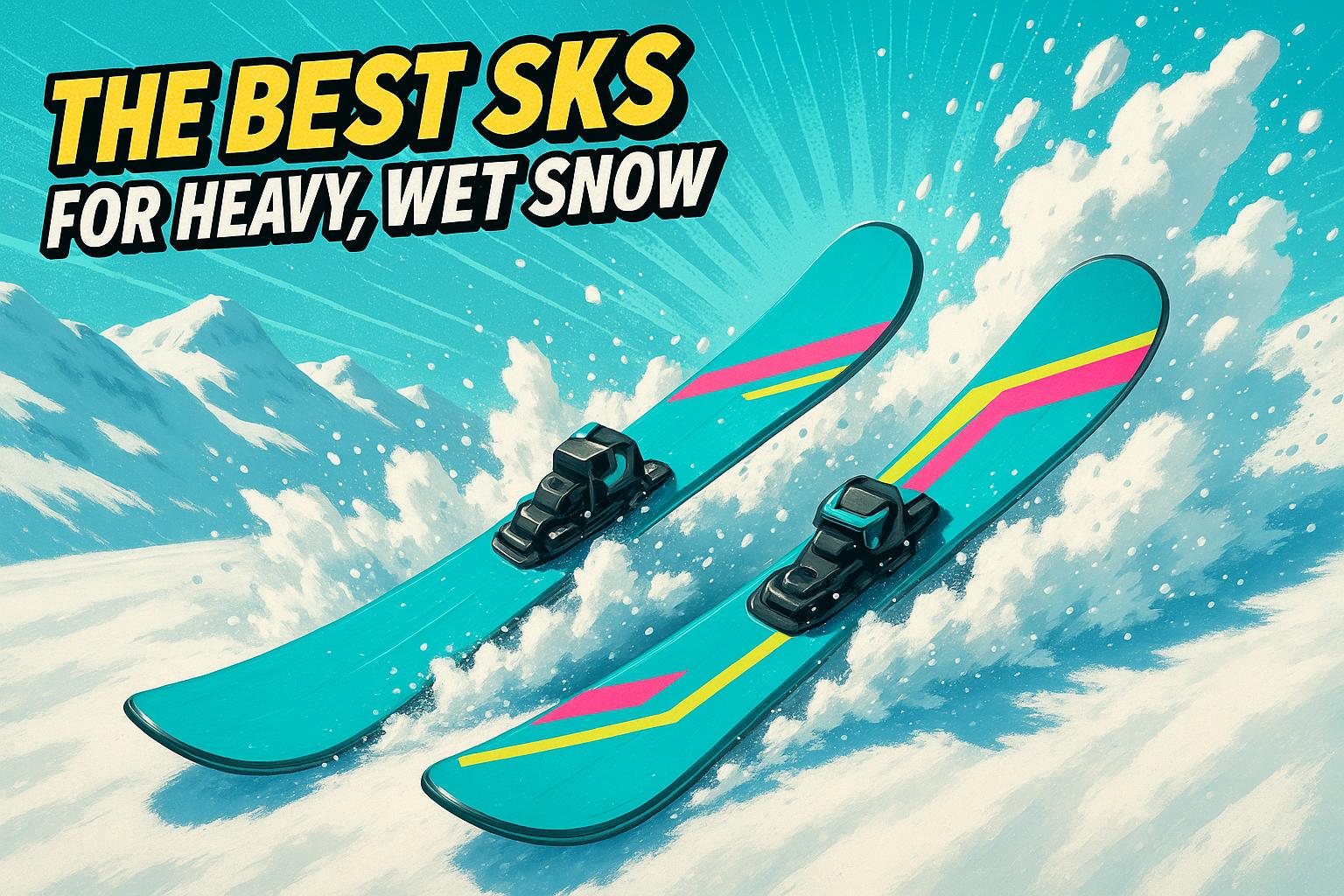
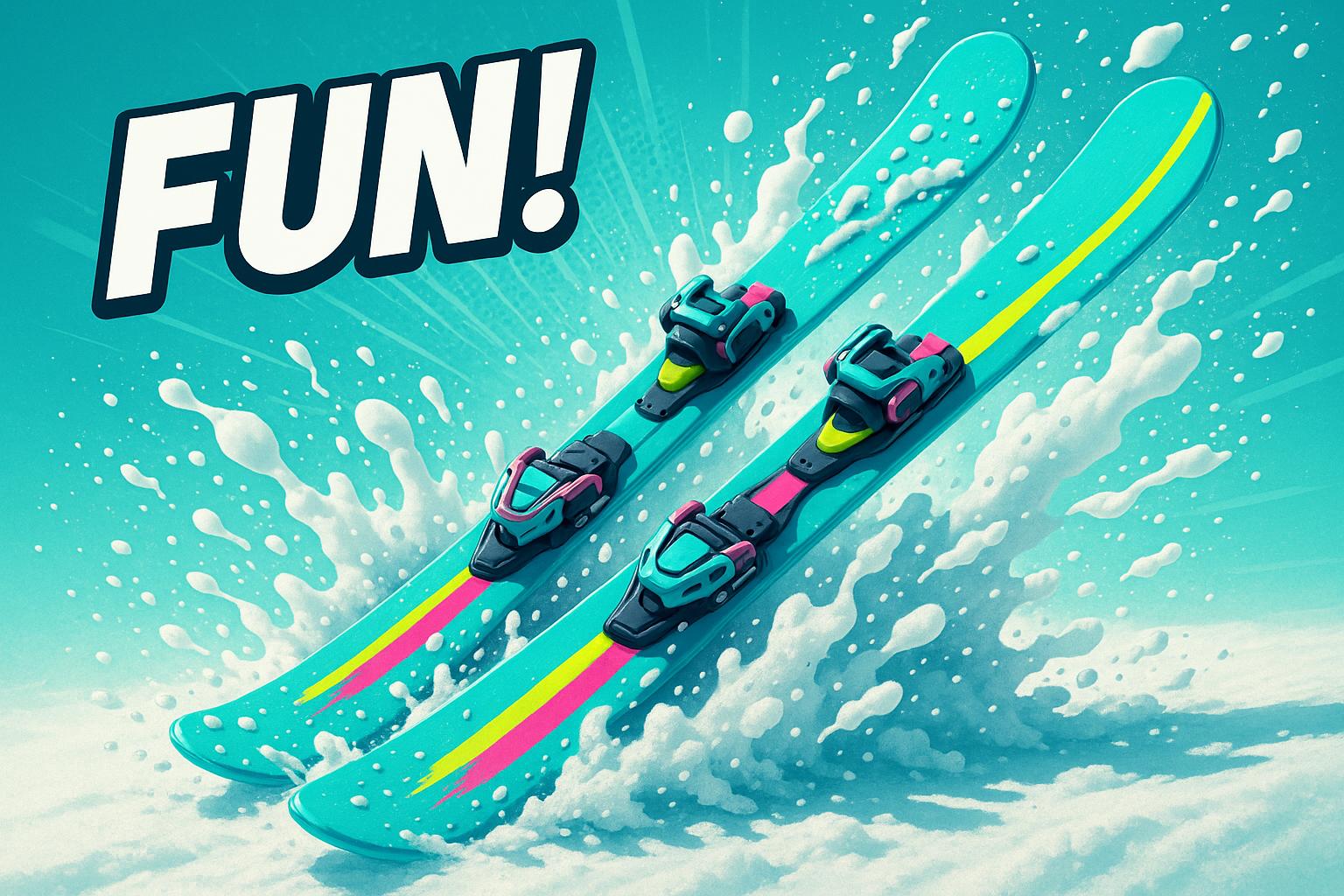
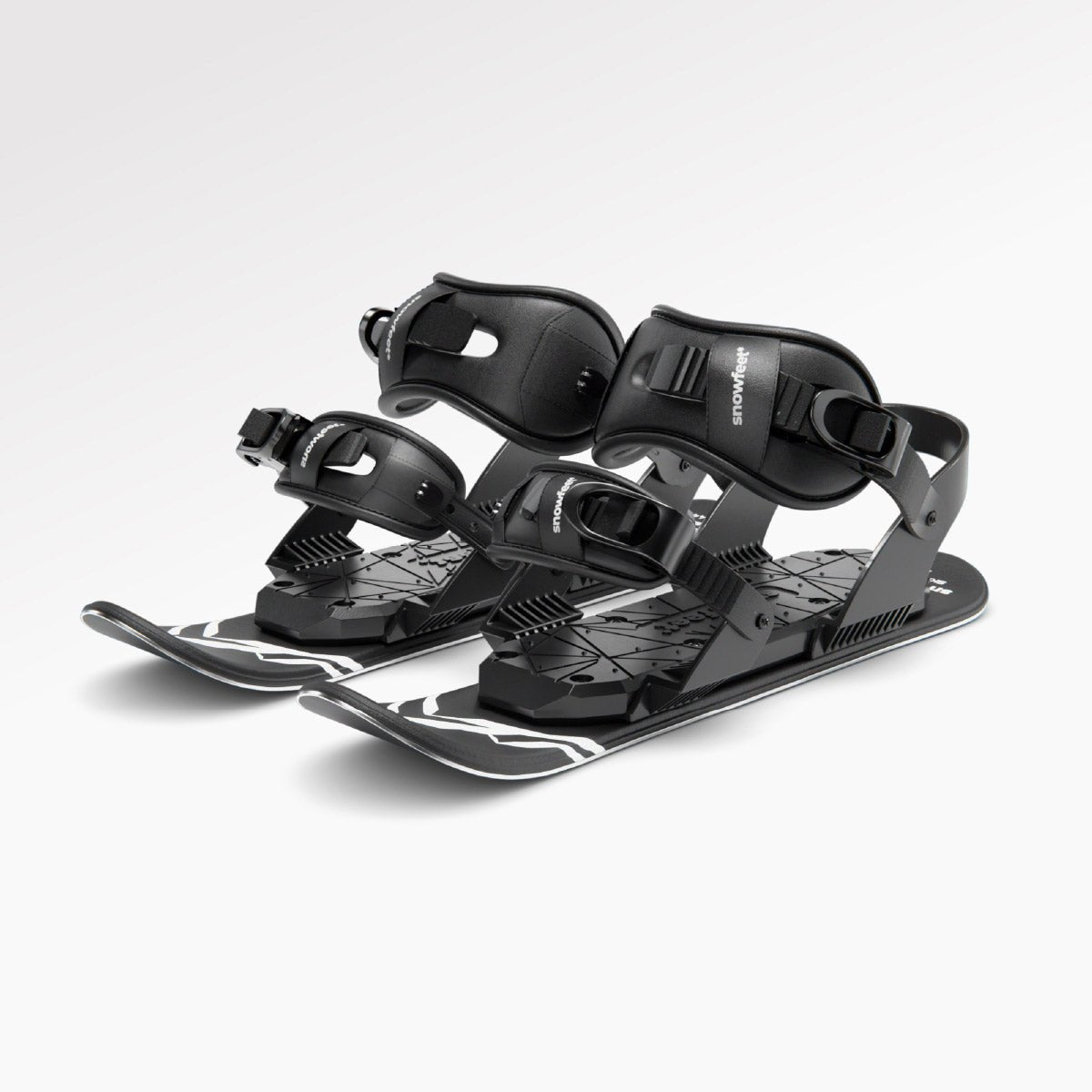
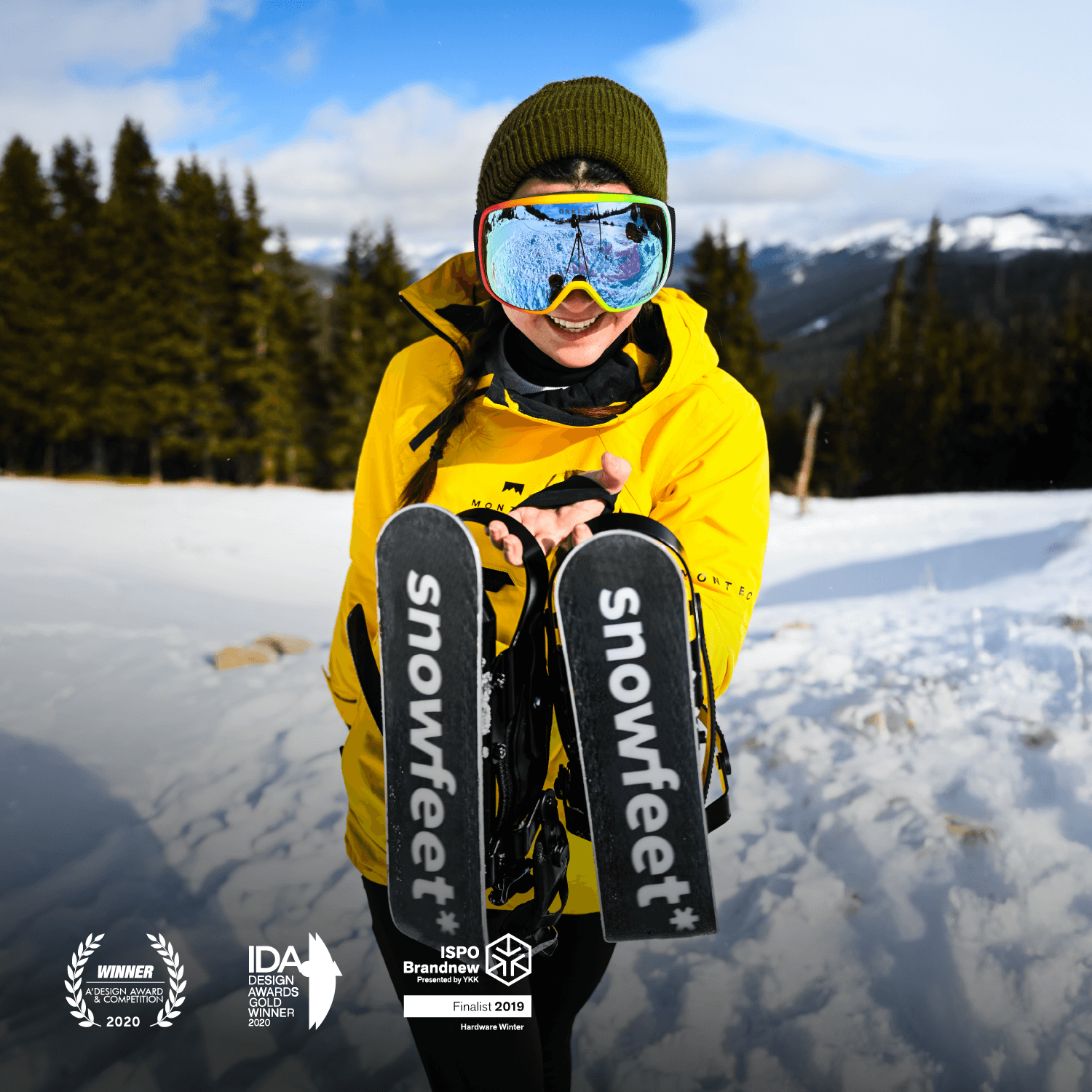
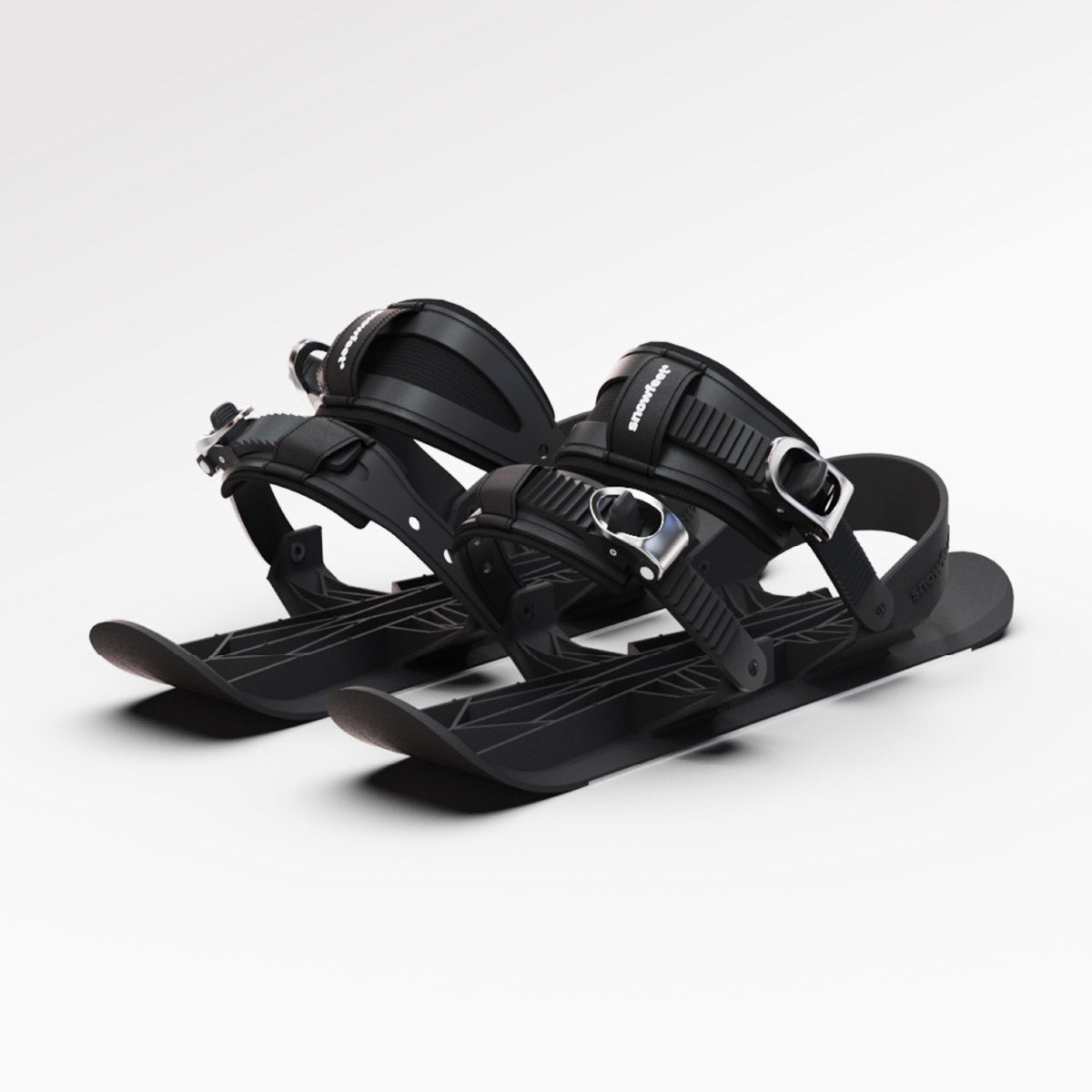

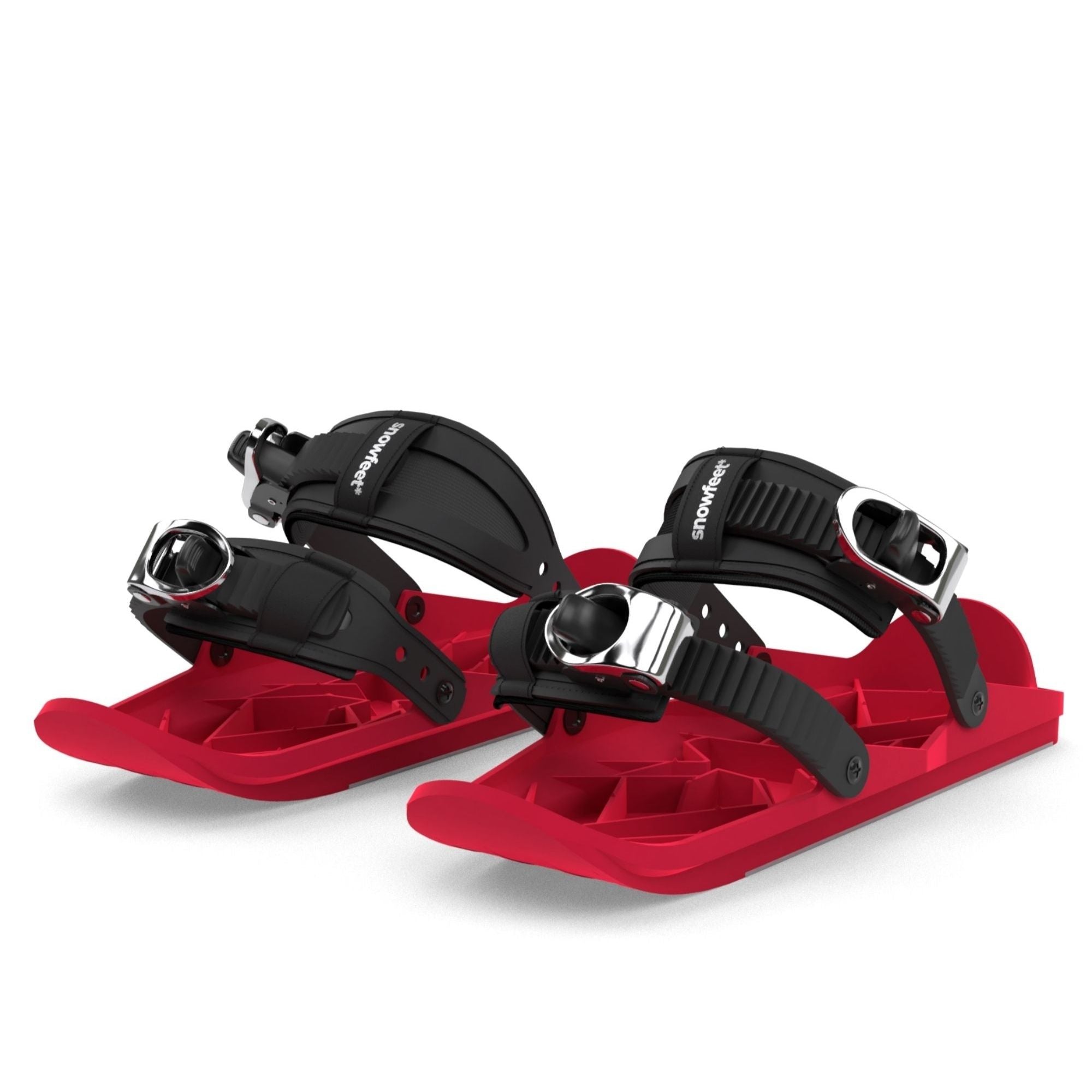
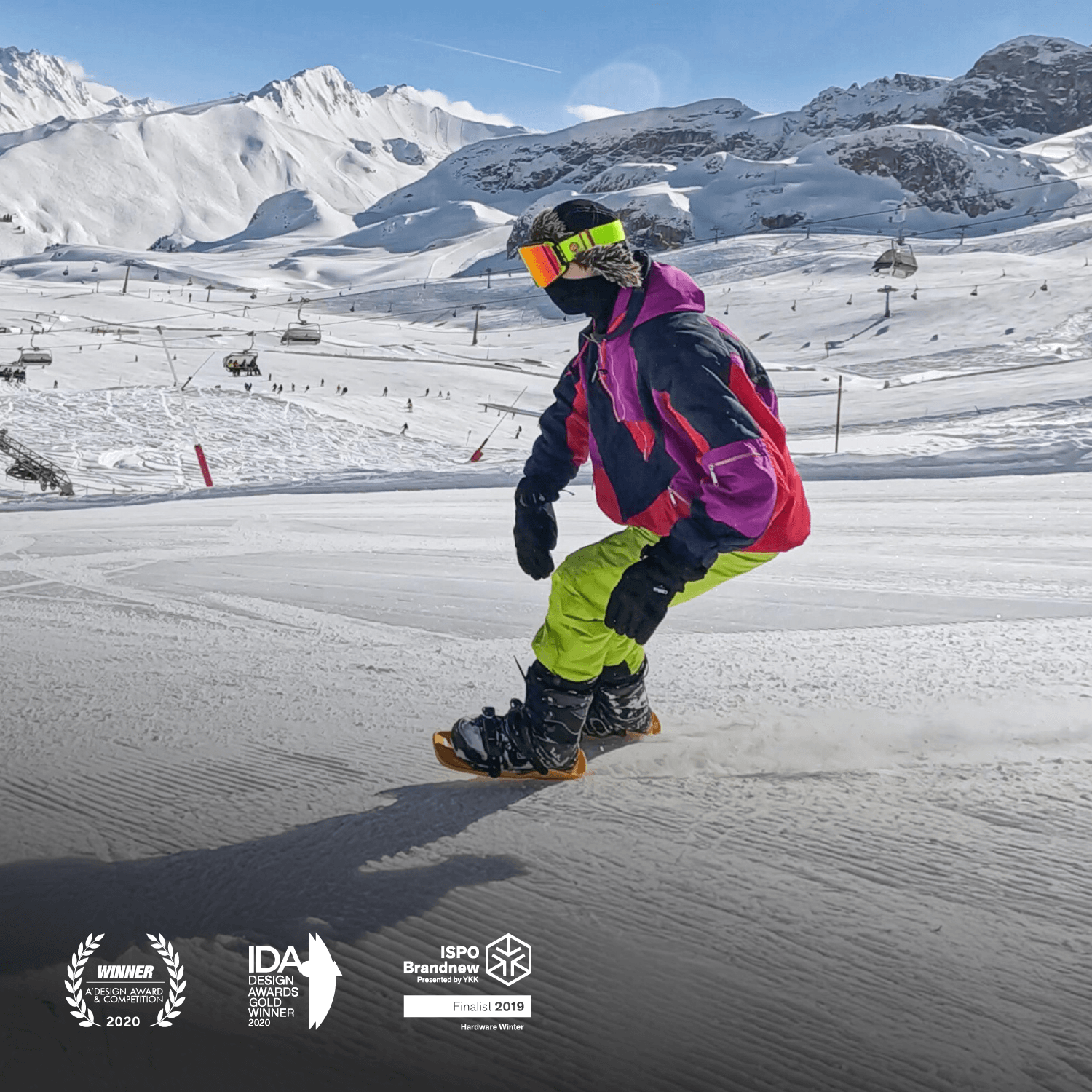


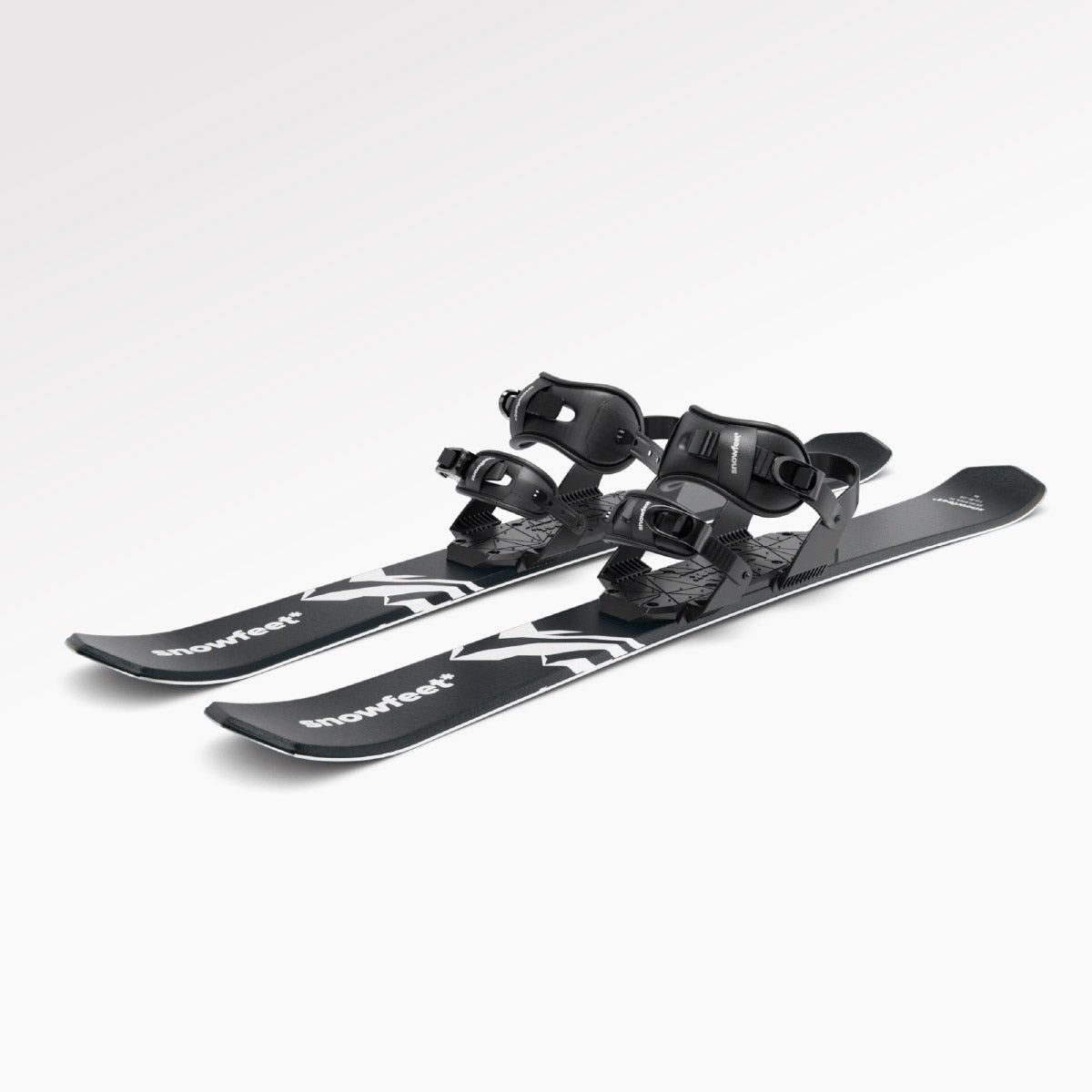
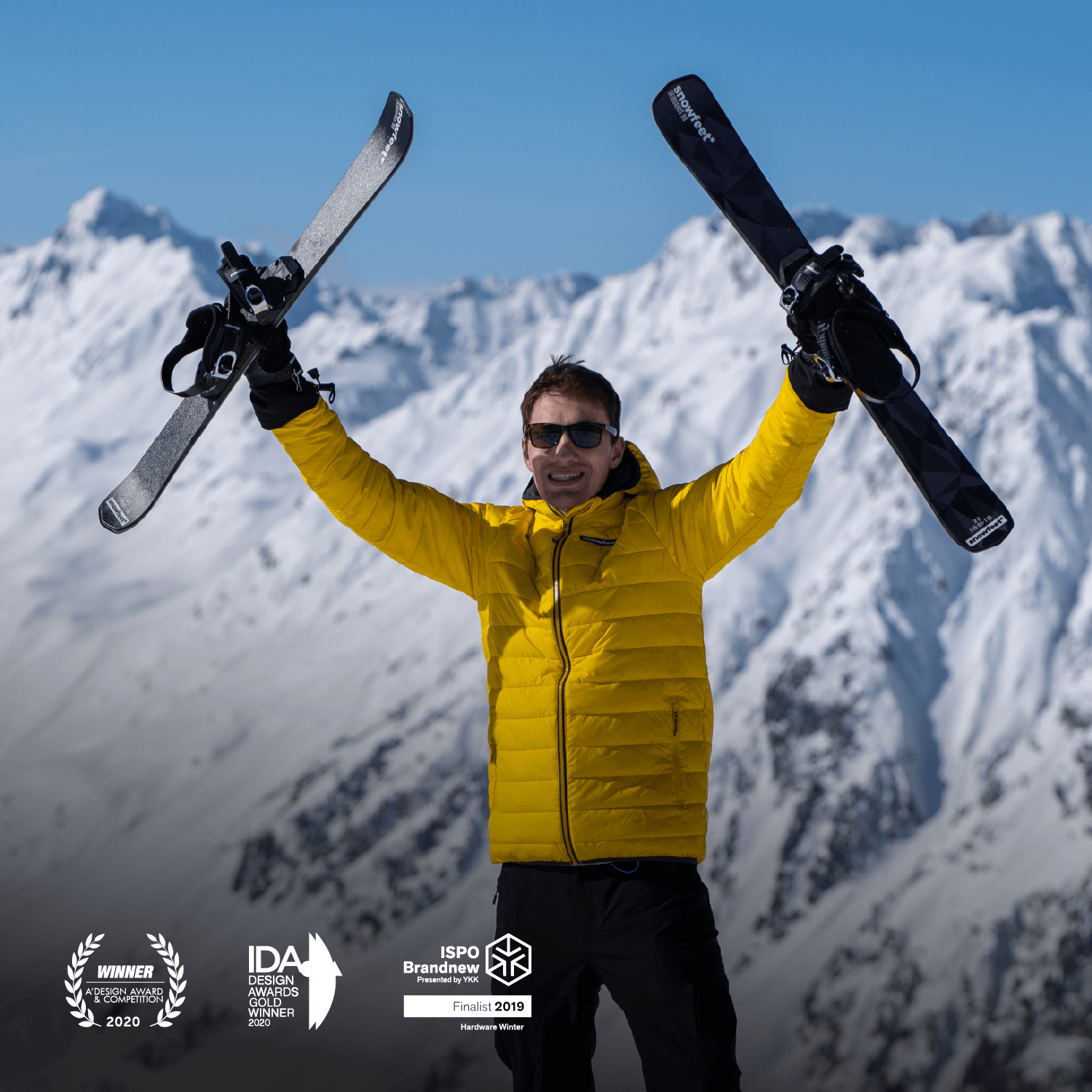
Lascia un commento
Questo sito è protetto da hCaptcha e applica le Norme sulla privacy e i Termini di servizio di hCaptcha.